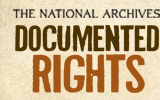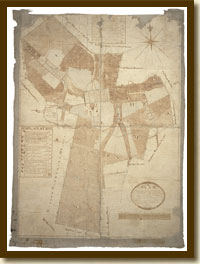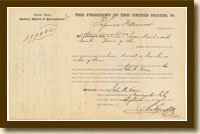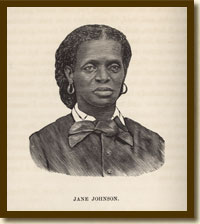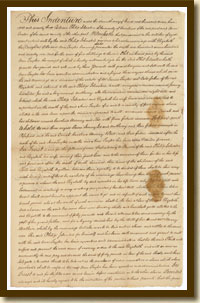Featured Story: Human Property
Treated as property, slaves were sold, given, and contracted out without regard to home or family. They had no rights, yet were held accountable for their actions.
Ophir Plantation Map,
Henry F. Porcher v. Kate Porcher, et. al., 1816
Civil Case Files National Archives, Records of District Courts of the United States, Record Group 21 (National Archives Identifier 2641472)
The area just north of Charleston, South Carolina, was once the site of dozens of plantations, including the Ophir Plantation owned by the Porcher family. This plantation map gives a view of the workings of the plantation and its layout.
Petition by John Hill Wheeler,
July 18, 1855
Habeas Corpus Case Files National Archives, Records of District Courts of the United States, Record Group 21 (National Archives Identifier 2641489)
Enslaved to John Hill Wheeler, U.S. ambassador to Nicaragua, Jane Johnson sought help in escaping. Abolitionists William Still and Passmore Williamson rescued Johnson and her two sons as they boarded the Delaware River ferry. Wheeler petitioned the court to have Williamson return his slaves.
Writ of Habeas Corpus, Wheeler v. Will,
July 19, 1855
Habeas Corpus Case Files National Archives, Records of District Courts of the United States, Record Group 21 (National Archives Identifier 2641488)
When Williamson refused to turn over the Johnson family to the court, he was jailed. The case became both an international and a national cause célèbre of the abolitionist movement.
Illustration, Jane Johnson, 1872
From The Underground Railroad, by William Still Courtesy of the Library of Congress
In one of the more dramatic moments of the trial, Jane Johnson, at great personal risk, returned to Philadelphia from Boston to testify on William Still’s behalf.
Order of Seizure, U.S. v. Negro Slave Ben,
July 5, 1816
Admiralty and Equity Case Files National Archives, Records of District Courts of the United States, Record Group 21 (National Archives Identifier 2641470)
When a notice was posted for a slave found on the Florida border (under Spanish rule) by a customs inspector working in the Mississippi Territory, ownership was contested by two men. Although the enslaved Ben spoke English, no one appears to have asked him to identify his owner.
Dowry Gift of Slaves,
Ann Taylor v. Thomas Hart, Jr., June 11, 1773
Judgments and Decrees National Archives, Records of District Courts of the United States, Record Group 21 (National Archives Identifier 2641471)
Slaves were part of a dowry gift to Elizabeth Taylor from her mother. Not only did Elizabeth receive three slaves—Jenny, Joe, and Anthony—but also their “future increase.”
